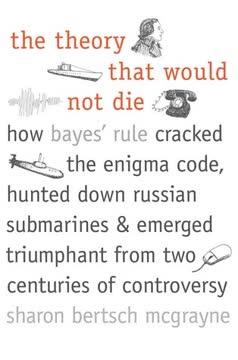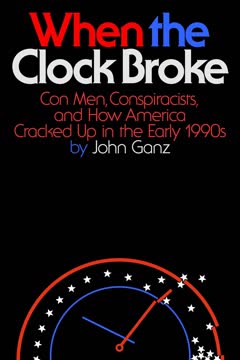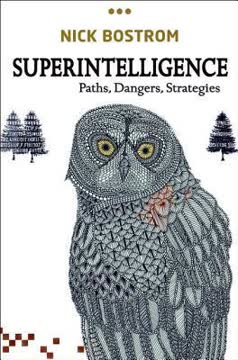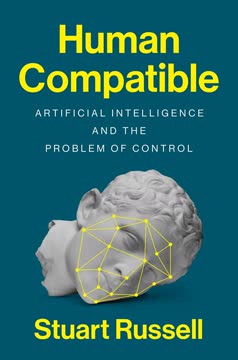Key Takeaways
1. Scientific evidence was systematically denied to protect corporate interests
Doubt is our product since it is the best means of competing with the 'body of fact' that exists in the minds of the general public. It is also the means of establishing a controversy.
Organized denial campaigns. Throughout the late 20th century, corporations and ideological groups systematically worked to create doubt about scientific evidence that threatened their interests. This tactic was pioneered by the tobacco industry and later adopted for issues like acid rain, ozone depletion, and climate change.
Tactics used:
- Funding contrarian scientists
- Creating fake grassroots organizations
- Exploiting journalistic balance norms
- Attacking the credibility of researchers
- Misrepresenting scientific uncertainty
Motivations: The primary goal was to prevent or delay regulation that could impact profits or challenge free-market ideology. By manufacturing controversy, these groups aimed to confuse the public and policymakers about the strength of scientific evidence.
2. Tobacco industry pioneered strategies to manufacture doubt about science
The tobacco industry was throwing its money at virtually anyone who would do research on the questions it was interested in.
Tobacco's playbook. The tobacco industry developed a sophisticated strategy to combat growing evidence of smoking's health risks. This approach became a template for future science denial campaigns.
Key elements:
- Funding alternative research to distract from evidence of harm
- Attacking studies linking smoking to cancer as "junk science"
- Insisting the evidence was inconclusive and more research was needed
- Framing the debate as about personal freedom rather than public health
- Using public relations firms to spread industry talking points
Long-term impact: These tactics delayed tobacco regulation for decades despite clear scientific evidence. The strategies refined by the tobacco industry provided a roadmap for other industries facing regulatory threats based on scientific findings.
3. Acid rain and ozone depletion faced similar campaigns of denial
The skeptics' arguments did the trick: they convinced people who didn't know otherwise that there was still a lot of doubt about the whole matter.
Environmental threats denied. As scientific evidence emerged about acid rain and ozone depletion, industries facing potential regulation deployed tactics similar to the tobacco industry to sow doubt.
Acid rain denial:
- Claimed natural causes like volcanoes were responsible
- Argued economic costs of action outweighed uncertain benefits
- Attacked EPA science as politically motivated
Ozone depletion denial:
- Promoted alternative theories blaming solar cycles
- Claimed banning CFCs would devastate the economy
- Portrayed ozone "hole" as a natural phenomenon
Delaying action: These campaigns successfully delayed policy responses for years, allowing continued environmental damage. The Montreal Protocol on ozone-depleting substances was ultimately successful, but acid rain regulations faced ongoing opposition.
4. Climate change denial emerged as a coordinated effort
The goal wasn't to correct scientific mistakes and place regulation on a better footing. It was to undermine regulation by challenging the scientific foundation on which it would be built.
Climate denial network. As evidence of human-caused climate change solidified in the 1980s and 1990s, a coordinated denial campaign emerged, often involving the same individuals and organizations from previous science battles.
Key players and tactics:
- Cold War physicists like Frederick Seitz and S. Fred Singer
- Conservative think tanks like the George C. Marshall Institute
- Emphasizing uncertainty and promoting alternative theories
- Attacking climate scientists' integrity and motivations
- Framing climate action as a threat to economic freedom
Effectiveness: This campaign successfully delayed meaningful climate action for decades, despite mounting scientific evidence. It exploited media norms of "balance" to give fringe views equal weight with the scientific consensus.
5. Secondhand smoke debate revealed tactics to undermine EPA
Bad Science was a compendium of attacks on science, published in places like the Washington Times, and written by staff of the Competitive Enterprise Institute.
Targeting the EPA. When the EPA classified secondhand smoke as a carcinogen, the tobacco industry and its allies launched a campaign to discredit the agency's scientific process.
Tactics employed:
- Funding think tanks to produce critical reports
- Promoting the concept of "junk science" to dismiss EPA findings
- Claiming EPA had a hidden political agenda
- Exploiting statistical debates about confidence levels
- Framing the issue as government overreach
Broader implications: This campaign went beyond defending tobacco to attack the legitimacy of regulatory science more broadly. It aimed to undermine public trust in scientific institutions and the regulatory process.
6. DDT ban revisionism demonstrates persistence of denial strategies
Carson's argument was that any war on nature was one that we were bound to lose.
Rewriting history. Decades after DDT was banned in the US, a revisionist narrative emerged claiming the ban caused millions of deaths from malaria. This demonstrates how science denial tactics persist and evolve over time.
Key claims and rebuttals:
- Claim: DDT ban caused millions of malaria deaths
- Reality: DDT use declined due to mosquito resistance, not the US ban
- Claim: No evidence DDT harmed wildlife or humans
- Reality: Substantial evidence of ecological damage and human health risks
Motivations: This campaign aimed to discredit the environmental movement and argue against regulation more broadly, rather than overturn the long-established DDT ban.
7. A network of think tanks and media outlets propagate science denial
For tobacco is not the end of our story. It is just the beginning.
Denial infrastructure. A network of conservative think tanks, industry-funded organizations, and sympathetic media outlets has developed to promote and amplify science denial messages.
Key players:
- Competitive Enterprise Institute
- Heartland Institute
- Cato Institute
- George C. Marshall Institute
- Wall Street Journal editorial page
Funding sources:
- Tobacco industry
- Fossil fuel companies
- Conservative foundations
This network allows coordinated messaging across multiple issues, from tobacco to climate change. It provides a veneer of credibility to fringe scientific views and talking points.
8. Cold War physicists played key roles in science denial movements
These men had no particular expertise in environmental or health questions, but they did have power and influence.
Scientific credentials misused. Several prominent physicists who had been involved in Cold War weapons programs became leading voices in science denial campaigns.
Notable figures:
- Frederick Seitz
- S. Fred Singer
- William Nierenberg
- Robert Jastrow
Motivations and impact:
- Anti-communist ideology and free-market views
- Leveraged scientific prestige to influence policy debates
- Provided credibility to industry-friendly positions
- Often opined on issues far outside their expertise
These scientists' involvement gave science denial campaigns intellectual heft and media attention they might not have otherwise received.
9. Media "balance" inadvertently promoted fringe views on settled science
While the idea of equal time for opposing opinions makes sense in a two-party political system, it does not work for science, because science is not about opinion. It is about evidence.
False equivalence. Journalistic norms of "balance" led many media outlets to give equal weight to fringe scientific views and the established scientific consensus.
Consequences:
- Public confusion about the state of scientific knowledge
- Amplification of minority views not supported by evidence
- Delay in public understanding and policy action on key issues
Exploitation: Science denial campaigns actively exploited this tendency, working to place their views in mainstream media to create the appearance of ongoing scientific debate.
10. Denial campaigns exploit scientific uncertainty to delay action
A wait-and-see policy may mean waiting until it is too late.
Uncertainty as a weapon. Science denial campaigns often focus on remaining uncertainties in scientific understanding to argue against taking action.
Tactics:
- Demanding impossible levels of certainty before action
- Emphasizing unknowns while downplaying established facts
- Funding research on alternative explanations
- Arguing economic costs outweigh uncertain benefits
Policy implications: This approach can be effective in delaying regulation even when the weight of evidence clearly points to the need for action. It exploits politicians' and the public's discomfort with scientific uncertainty.
11. Science denial threatens public health and environmental protection
If you could convince people that an example of successful government regulation wasn't, in fact, successful—that it was actually a mistake—you could strengthen the argument against regulation in general.
Broader agenda. Science denial campaigns often serve a larger ideological goal of opposing government regulation and promoting free-market fundamentalism.
Consequences:
- Delayed action on public health threats like tobacco
- Continued environmental degradation from acid rain and climate change
- Erosion of public trust in scientific institutions
- Politicization of science and science-based policy
Long-term risks: By undermining the role of science in policymaking, these campaigns threaten society's ability to address complex challenges that require evidence-based solutions.
Last updated:
FAQ
What's Merchants of Doubt about?
- Focus on Disinformation: Merchants of Doubt by Erik M. Conway and Naomi Oreskes explores how a small group of scientists misled the public and policymakers about significant scientific issues, such as tobacco smoke, acid rain, and climate change.
- Historical Context: The book traces the history of these scientific controversies, revealing how tactics used by the tobacco industry to create doubt about smoking's dangers were later applied to environmental issues.
- Impact on Public Perception: It illustrates how these efforts to obscure scientific truths have had lasting effects on public understanding and policy decisions regarding environmental issues.
Why should I read Merchants of Doubt?
- Understanding Misinformation: Reading this book provides insight into the mechanisms of misinformation and how scientific facts can be distorted for political and economic gain.
- Relevance to Current Issues: The themes are highly relevant today, as similar tactics are used to challenge scientific consensus on climate change and other critical issues.
- Critical Thinking Skills: The authors encourage readers to critically evaluate the information presented by various sources, especially on contentious issues like climate change.
What are the key takeaways of Merchants of Doubt?
- Doubt as a Product: The book emphasizes that "Doubt is our product," highlighting how industries create uncertainty to protect their interests, as seen with tobacco and fossil fuels.
- Role of Scientists: It illustrates how respected scientists shifted from being advocates for science to becoming defenders of industry, undermining public trust in scientific research.
- Consequences of Inaction: The book warns that the delay in addressing environmental issues due to manufactured doubt can lead to irreversible damage to ecosystems and public health.
What are the best quotes from Merchants of Doubt and what do they mean?
- "Doubt is our product": This quote encapsulates the central theme of the book, illustrating how industries intentionally create doubt to delay regulation and protect profits.
- "The issue was not free speech; it was free markets": This reflects the authors' argument that the motivations behind the disinformation campaigns were rooted in a defense of capitalism rather than genuine concern for public discourse.
- "Garbage doesn’t just go away": This emphasizes the importance of addressing misinformation rather than ignoring it, as inaction can have serious repercussions for public understanding and policy.
How does Merchants of Doubt address the issue of climate change?
- Denial Tactics: The book details how the same strategies used to deny the health risks of smoking were later applied to climate change, creating confusion and delaying action.
- Scientific Consensus: Despite overwhelming scientific agreement on climate change, a small group of skeptics continues to challenge this consensus, often with funding from industries that would be affected by regulation.
- Call to Action: The narrative serves as a warning about the consequences of inaction on climate change, urging readers to recognize the importance of trusting scientific evidence.
What is the "Tobacco Strategy" mentioned in Merchants of Doubt?
- Manufacturing Doubt: The "Tobacco Strategy" refers to the tactics used by the tobacco industry to create uncertainty about the health risks of smoking, which involved funding scientists to challenge established research.
- Application to Other Issues: This strategy was later employed in debates over acid rain, ozone depletion, and climate change, demonstrating a pattern of undermining scientific consensus for corporate interests.
- Long-term Effects: The book illustrates how these tactics have lasting impacts on public perception and policy, making it difficult to address environmental and health issues effectively.
Who are the main figures discussed in Merchants of Doubt?
- Fred Singer: A physicist known for his contrarian views on climate change and ozone depletion, he is portrayed as a key figure in promoting doubt about established scientific consensus.
- Frederick Seitz: A physicist who was involved in the tobacco industry's efforts to discredit scientific research linking smoking to health issues.
- Ben Santer: A prominent climate scientist whose work on human-induced climate change faced intense scrutiny and personal attacks, illustrating the challenges faced by scientists in the public arena.
How does Merchants of Doubt relate to current environmental issues?
- Ongoing Climate Change Debates: The book's exploration of doubt-mongering is particularly relevant in the context of contemporary discussions about climate change.
- Public Health Implications: The authors draw parallels between the disinformation campaigns surrounding tobacco and those related to environmental health issues.
- Need for Informed Action: Understanding the history of doubt-mongering can inform current efforts to combat climate change, advocating for a proactive approach to science communication and policy-making.
What role do think tanks play in the narrative of Merchants of Doubt?
- Funding Disinformation Campaigns: The book details how conservative think tanks, often funded by corporations, have been instrumental in promoting doubt about scientific findings.
- Shaping Public Policy: These think tanks have influenced policy decisions by creating a false sense of scientific uncertainty, delaying action on critical issues like climate change and public health.
- Interconnected Networks: The authors illustrate the interconnectedness of these organizations, showing how they collaborate to amplify their messages and shape public discourse.
How does Merchants of Doubt address the concept of scientific consensus?
- Consensus as a Scientific Principle: The authors explain that scientific consensus is reached through rigorous peer review and the accumulation of evidence over time.
- Misrepresentation of Dissent: A small number of dissenting voices are often amplified to create the illusion of controversy, misleading the public into thinking that scientific debates are more contentious than they actually are.
- Importance of Trust in Science: The book emphasizes the need for public trust in scientific institutions and findings, arguing that manufactured doubt erodes this trust and hampers effective policy-making.
What methods do the authors use to convey their arguments in Merchants of Doubt?
- Case Studies: The book employs detailed case studies to illustrate how misinformation has been spread and the effects it has had on public perception and policy.
- Historical Analysis: Conway and Oreskes provide a historical analysis of key events and figures in the environmental movement, linking them to broader political and ideological trends.
- Interviews and Documents: The authors draw on interviews, archival documents, and scientific literature to support their claims and provide a comprehensive view of the issues discussed.
What lessons can be learned from Merchants of Doubt?
- Critical Thinking: Readers are encouraged to think critically about the sources of information and the motivations behind them, especially in scientific debates.
- Advocacy for Science: The book serves as a call to action for scientists and the public to advocate for science-based policies and to resist efforts to undermine scientific consensus.
- Recognizing Patterns: Understanding the historical patterns of doubt creation can help inform current and future responses to similar tactics in ongoing environmental and health debates.
Review Summary
Merchants of Doubt receives mostly positive reviews for its meticulously researched expose of how a small group of scientists and corporations sowed doubt about scientific consensus on issues like smoking, acid rain, and climate change. Readers praise its detailed historical analysis and compelling narrative, though some find the level of detail overwhelming. Critics argue it presents a one-sided view and overemphasizes peer review. Overall, reviewers consider it an important, eye-opening book on the manipulation of science for political and economic gain, despite occasional flaws in presentation.
Similar Books







Download PDF
Download EPUB
.epub digital book format is ideal for reading ebooks on phones, tablets, and e-readers.




